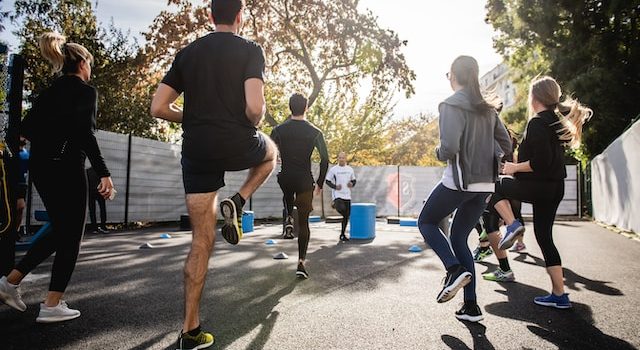
Introduction:
When it comes to building strength and muscle mass, few exercises rival the squat in terms of effectiveness and efficiency. Squatting is a compound movement that engages multiple muscle groups, stimulates hormone production, and enhances overall athletic performance. In this article, we will explore the reasons why squatting is an essential exercise for anyone looking to build strength, develop muscle mass, and achieve their fitness goals.
- Full-Body Activation:
The squat is a functional exercise that targets major muscle groups throughout the entire body. It primarily engages the quadriceps, hamstrings, and glutes, but it also activates the core, lower back, calves, and even the upper body to some extent. This comprehensive activation of muscle groups makes squats a time-efficient exercise that maximizes muscle engagement and energy expenditure.
- Growth Hormone Release:
Squatting has been shown to stimulate the release of growth hormone, which plays a crucial role in muscle growth and repair. The heavy load and compound nature of squats put significant stress on the body, signaling the release of growth hormone to facilitate tissue regeneration and hypertrophy. This hormonal response contributes to muscle development and can lead to substantial gains in strength and size.
- Functional Strength:
Squats are a functional movement that mimics everyday activities such as sitting down, standing up, and lifting objects from the ground. By training the body to handle these movements with heavy loads, squats develop functional strength that translates into real-world activities. Whether you’re an athlete looking to enhance performance or an individual aiming to improve overall physical abilities, incorporating squats into your training routine is essential.
- Core Stability and Balance:
Squatting requires a strong and stable core to maintain proper form and balance. The core muscles, including the abdominal, oblique, and lower back muscles, work together to stabilize the spine and transfer force effectively during squats. Regular squatting strengthens the core, improving stability and reducing the risk of back injuries. Additionally, the balance required to perform squats helps improve overall proprioception and body control.
- Joint Strength and Stability:
Contrary to popular belief, squats, when performed correctly, promote joint strength and stability rather than causing harm. Squatting through a full range of motion strengthens the muscles, tendons, and ligaments around the knees, hips, and ankles. This increased stability helps protect these joints during various activities and can potentially reduce the risk of injuries, such as sprains or strains.
- Metabolic Boost:
Due to the intense nature of squats and the number of muscles involved, they provide a significant metabolic stimulus. Squatting recruits a large amount of muscle mass, which increases energy expenditure during and after the exercise. This metabolic boost not only supports fat loss but also contributes to overall cardiovascular health and metabolic function.
- Versatility and Adaptability:
Squats are incredibly versatile and can be modified to suit various fitness levels and goals. Whether you’re a beginner starting with bodyweight squats or an advanced lifter using heavy barbells, squats can be adapted to challenge individuals of all fitness levels. Variations such as front squats, goblet squats, or single-leg squats add variety and target specific muscle groups, allowing for a well-rounded lower body development.
Conclusion:
Incorporating squats into your training routine is a game-changer for building strength, developing muscle mass, and improving overall fitness. With its ability to activate multiple muscle groups, stimulate growth hormone release, enhance functional strength, and promote joint stability, the squat is a powerhouse exercise that yields impressive results. So, whether your goal is to increase athletic performance, shape your physique, or improve everyday movements, embrace the power of the squat and unlock your full potential.










